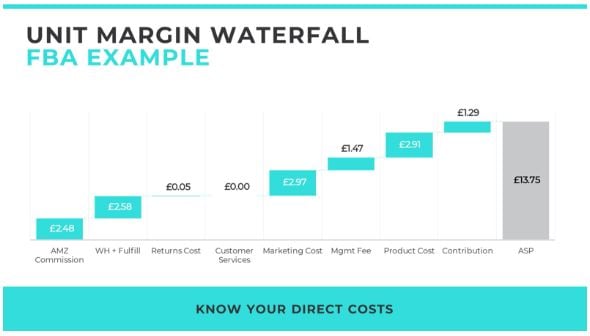For US and Europe-based brands, Amazon may seem like the obvious starting point, but smaller marketplaces outperform Amazon in a number of regions and product categories. From market-specialists (i.e. Bol.com in the Netherlands) to goods specialists (i.e. Wayfair’s homeware products), there are over 150 non-Amazon marketplaces that may be better suited to your products and objectives.
To give your business the best chance of success, follow these 5 steps to choosing the right marketplaces for your brand.
1. Set the short-term criteria
What are your short-term objectives from selling on marketplaces? While boosting sales and profit are viable long-term objectives arriving in years 2-3+, the first year on marketplaces is all about investment, traction and sales velocity.
Be it building brand awareness and entering new markets or clearing out stock and acquiring new customers, outlining the 3-5 core objectives for your brand in years 1 and 2 will help you choose the most suitable channels. For example, discount-orientated marketplaces like eBay are better for shifting old stock, while category-specific marketplaces like Farfetch (designer fashion) are better for visibility among target customers.
You should also consider your ability to sell/distribute in each territory - in terms of logistics, compliance, tax regulations and support etc - in order to create a shortlist of suitable marketplaces to assess.
2. Assess the profitability
You’re in the business of making money, so make sure these marketplaces will make money for your business. While profitability might not be the core short-term objective, weighing up the indicative costs of selling on each channel will help you make sensible marketplace decisions.
These include:
- Distribution - Distribution rates have an outsized impact on marketplace profit (units per transaction are on average 1-1.5 vs 2.5-3.5 on own brand sites).
- Warehousing - The cost of storing stock varies considerably according to the size, weight and geography of your products.
- Management - Due to differing marketplace complexity, some sites require specific integrations and/or consultants to help manage your marketplace sales.
 There are a wide range of potential costs, but in general you want to work out your unit margin waterfall (see left) for each marketplace by weighing up the costs vs your historical sales mix.
There are a wide range of potential costs, but in general you want to work out your unit margin waterfall (see left) for each marketplace by weighing up the costs vs your historical sales mix.
If there’s no path to profitability, you should cut the marketplace from your shortlist (for the time being).
3. Choose your operational model
Do you have the expertise and time to manage marketplaces internally? Are you willing to fully outsource marketplace sales to a reseller? Would you prefer to take a hybrid approach by engaging a marketplace agency?
How you manage marketplaces usually depends on the complexity of the marketplaces you choose. Some require complex integrations to a channel management system (Zalando), while others offer an ‘upload and go’ style set-up with (Wayfair). Any multi-channel strategy will need technology to underpin stock, orders and possibly product data management.
From fulfilment by Amazon (FBA) to third-party logistics (3PL), deciding the level of outside involvement should also take into account the different costs (i.e. monthly management retention), additional marketplace fees (i.e. translation and design of product listings) and your stock efficiency (i.e. where you keep stock and sell stock).
4. Score the shortlist
To objectively evaluate your shortlisted marketplaces and list them in order of priority, use a simple scoring methodology (1-5 works well) and score your shortlist based on brand, financial, commercial and operational factors:
- Brand - e.g. number of competitors listing on the marketplace and number of listings in the category.
- Financial - e.g. assess profitability analysis alongside individual marketplace costs.
- Commercial - e.g. establish market size using tools such as Alexa Traffic Rank.
- Operational - e.g. operational ease (could be region or marketplace specific) according to your business’ strengths and weaknesses.
For each factor, you should think about the mix of data you can gather, such as historical B2B data, competitor info, trends analytics and marketplace reports (there’s lots of secondary data on marketplaces out there), and weight the final score to your business objectives (i.e. profitability might be less important if you’re trying to clear discounted stock).
5. Get launch advice for your top scored marketplaces
Et voilà. You have a prioritised list of marketplaces that are suited to your brand and objectives. But before diving headfirst into the nitty-gritty business of selling on these channels, reach out to the marketplace directly or speak to a consultant with specialist knowledge of that marketplace. There are a wide range of specific marketplace tips and tricks to consider pre-launch, which can help you hit the ground running.
This is only a whistle-stop tour of the selection process. We do this for a living; guide Brands on where and how to expand their marketplace reach.
For a more in-depth explanation or support when carrying out your assessment, scroll down and get in touch.






Blog Comments